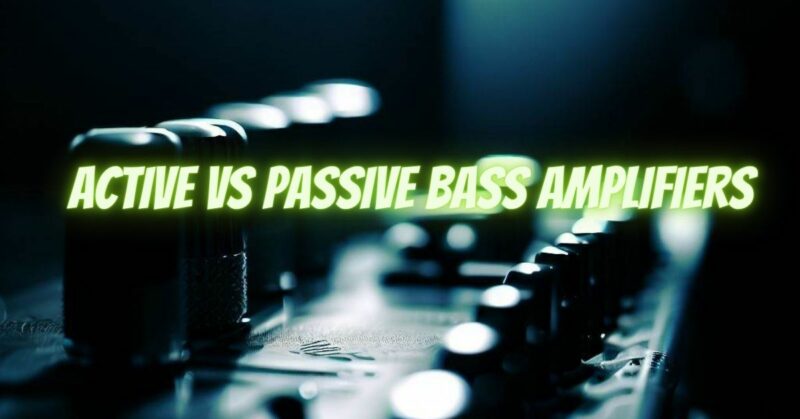When it comes to bass amplification, two primary options dominate the landscape: active and passive bass amplifiers. Both designs have their merits and cater to different preferences and playing styles. In this article, we explore the dynamic duo of active and passive bass amplifiers, uncovering their unique characteristics and helping you make an informed choice for your low-end pursuits.
- Passive Bass Amplifiers: The Classic Workhorses
Passive bass amplifiers have been the traditional choice for bassists for decades. These amplifiers rely on a straightforward design where the signal from the bass guitar passes through the amplifier’s preamp section and is then amplified by the power amp section. The preamp controls on the amplifier, such as gain, volume, EQ, and tone controls, shape the bass’s sound before amplification.
Passive bass amplifiers are known for their simplicity and transparent sound reproduction. They provide a solid foundation for the bass guitar’s natural tone and character, faithfully amplifying the instrument’s inherent qualities. Passive amplifiers often have a warm and organic tonal signature, with a dynamic response that reacts sensitively to the player’s touch.
One advantage of passive bass amplifiers is their flexibility in tone shaping. By utilizing external effects pedals or outboard equalizers, bassists can fine-tune their sound to their preferences, tailoring the tone precisely to their musical style.
- Active Bass Amplifiers: Precision and Versatility
Active bass amplifiers, on the other hand, bring additional sonic capabilities to the table. These amplifiers incorporate a built-in preamp section powered by a battery or external power supply. The active preamp provides additional control over the bass guitar’s signal, allowing for precise shaping of the tone and enhanced versatility.
Active bass amplifiers often feature a range of tone controls, including bass, midrange, and treble EQ knobs. These controls enable bassists to sculpt their sound with precision, boost or cut specific frequency ranges, and tailor the tone to suit different musical genres and playing styles.
Another significant advantage of active bass amplifiers is their high input impedance. This feature minimizes signal loss and interference, ensuring a strong and clean signal from the instrument to the amplifier. Additionally, active amplifiers often offer a higher power output, allowing for increased volume levels and headroom.
- The Power of Integration: Built-in Electronics
Active bass amplifiers often come equipped with built-in electronics and features that further expand their functionality. Many models include onboard compression, effects loops, and direct output options, making them ideal for studio recording and live performances. Some active amplifiers even offer the convenience of headphone outputs for silent practice sessions.
Active bass amplifiers also excel in providing consistent tone across different venues and audio systems. The built-in preamp and EQ controls ensure that the bassist’s desired tone remains intact regardless of the amplification system in use, making them a popular choice for touring musicians and gigging bassists.
Conclusion:
Choosing between active and passive bass amplifiers ultimately depends on personal preferences, playing style, and tonal requirements. Passive amplifiers offer a classic and transparent sound reproduction, allowing the natural qualities of the bass guitar to shine through. They provide a solid foundation for external effects and offer simplicity and organic warmth.
Active bass amplifiers, on the other hand, provide precise tone shaping, versatility, and integrated features. With their built-in preamps and expanded EQ controls, they offer enhanced control over the bass guitar’s signal, making them ideal for bassists who seek tonal flexibility and consistency across different performance settings.
Ultimately, both active and passive bass amplifiers have their place in the world of bass amplification. The choice between them lies in the hands of the bassist, as they embark on their low-end journey, seeking the perfect amplification solution that resonates with their musical aspirations and sonic preferences.

